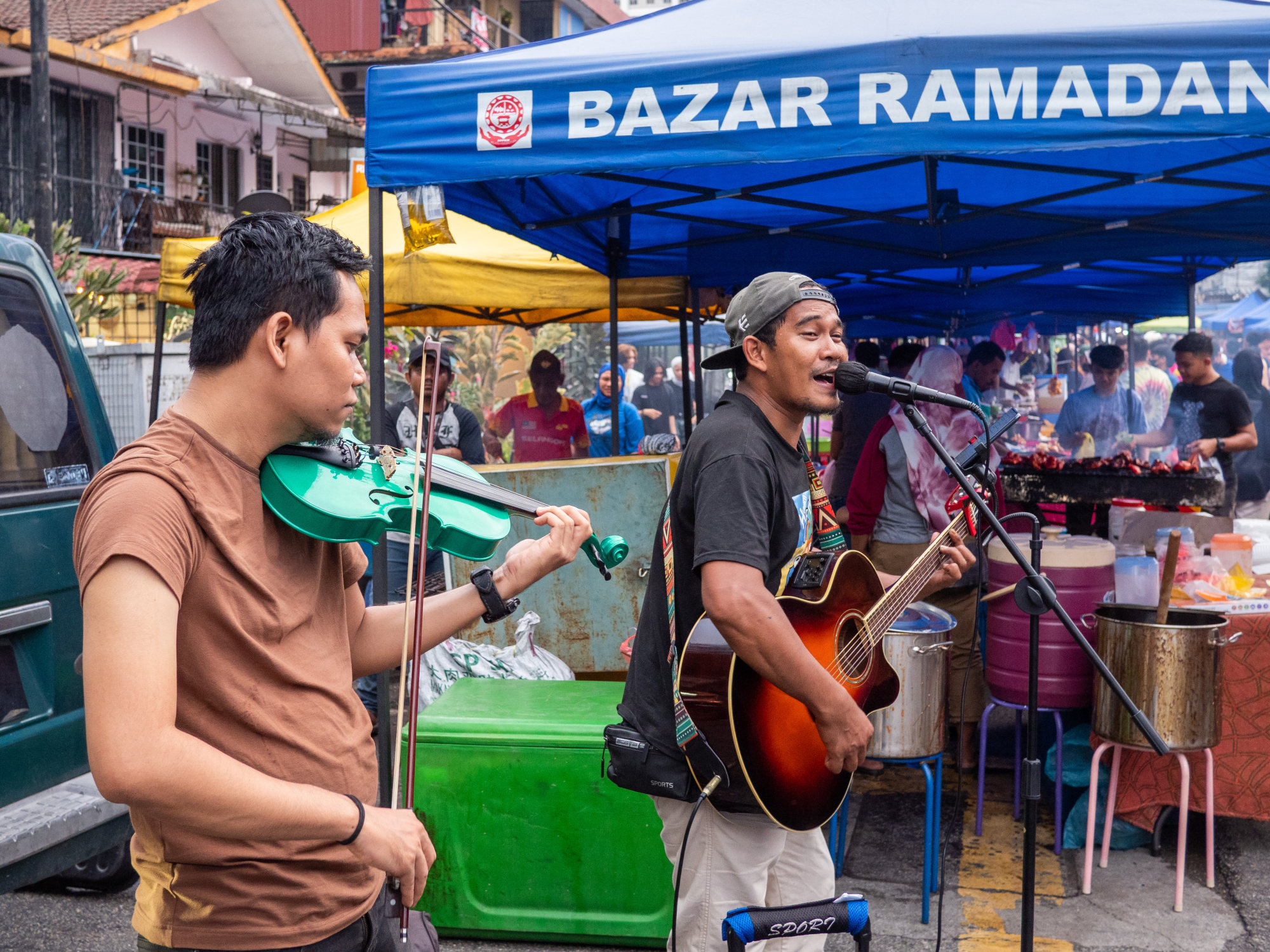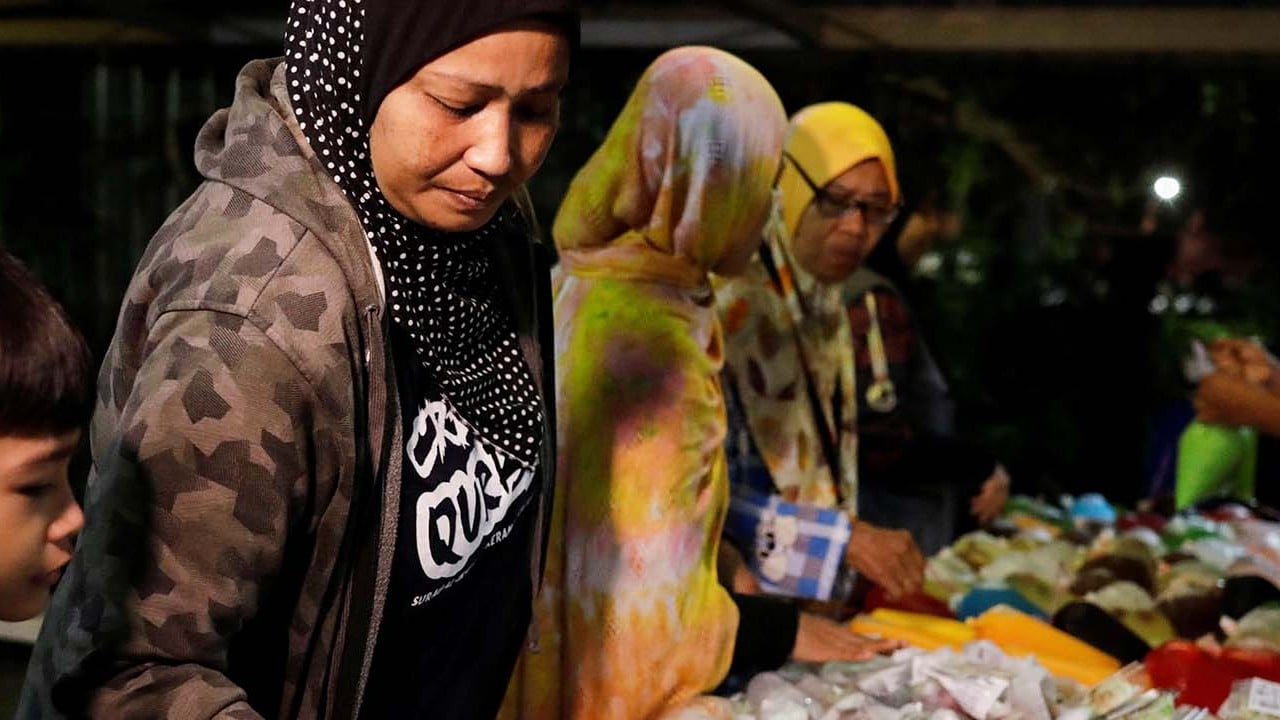
Southeast Asia’s post-Covid Ramadan bazaars grapple with high rent, rising e-commerce
- Singapore’s two biggest and oldest Ramadan bazaars have been hit with the double whammy and can’t compete with cheaper Chinese products online
- Malaysian’s selling fresh foods and traditional biscuits have had better luck, but many apparel retailers say they are losing money this year
The full-scale comeback of Ramadan bazaars in Southeast Asia following their suspension over the coronavirus pandemic brings fresh hope for stallholders, but also uncovers new challenges of soaring rent and stiff competition with online shops.
The return of the bazaars in countries with sizeable Muslim populations is not just significant for Muslims in the region who are celebrating the Islamic festival of Eid. It also serves as one of the key markers of the full resumption of normality in social life after the pandemic with hopes of a post-Covid economic recovery.
Ramadan is seen as one of the busiest shopping seasons in these countries, with many splurging on new clothes, accessories and food, celebrating the completion of Ramadan. The markets have traditionally preceded the Eid festival.
With most of its Covid-19 pandemic restrictions finally lifted, Singapore’s two biggest and oldest Ramadan bazaars were launched in the middle of last month at about the same time as the start of the Muslim fasting month, but on a much larger scale than before.
The Geylang Serai bazaar, one of the two largest bazaars organised by a governmental grass roots organisation, has set up 700 stalls this year, compared with 500 in 2019 and just 70 last year. Over 3 million people have visited the bazaar so far, according to the organiser.
Malaysian Marina Redzuan was helping her aunt, who runs an apparel chain in Malaysia, at a booth at the Kampong Gelam bazaar, the second of the two biggest bazaars, near the Sultan Mosque in Singapore’s city centre.
The company has a thriving online business through its website and on social media platforms such as Instagram and Facebook.
But “if it’s during fasting month, you sell a lot more at a physical store”, the aunt said. This year marked the first time the company had participated in a bazaar since the pandemic.
With the easing of Covid-19 restrictions, the bazaars became hybrid, with online and on-site events.
They started reopening last year, but were hit with the double whammy of surging rent amid elevated inflation and fierce competition from cheaper Chinese products on e-commerce platforms.
The city state’s inflation more than doubled from 2.3 per cent in 2021 to 6.1 per cent last year, though it has slowed to 5 per cent so far this year. Still the rate remains higher than in its two less developed neighbours – 4.2 per cent in Indonesia and 3.1 per cent in Malaysia.
Energy and food prices have surged in particular, reflecting global inflation exacerbated by Russia’s invasion of Ukraine. Ramadan bazaars are no exception.

Singaporean entrepreneur, Sherie Sarip, 49, has rented two booths at the Geylang Serai bazaar for a total of S$13,000 (US$9,771) to sell festive biscuits, about double the rate in 2012 when she first had a stall.
“I have a sizeable number of followers on Facebook, so online is very good for us”, she said. “But we always have to have a display during bazaars to feature and showcase our product”.
While those selling fresh foods and traditional Malay festive biscuits have had better luck, many apparel retailers are complaining that they are losing money this year.
Stallholders could earn as much as S$500,000 (US$374,000) in one month during the golden years back in the 1990s, Singaporean Abu Bakar Idrus said.
“There was such an endless stream of customers that you could hardly take a rest,” the 58-year-old said as he worked at his cousin’s temporary shop at the Geylang Serai bazaar on a recent Saturday.
But business became particularly tough this year partly because a stronger Singaporean dollar prompted people to go shopping to neighbouring Malaysia.
“I didn’t expect it to be this bad. The whole row of shops on this street is losing money,” Abu Bakar said.
The flood of cheap goods from China on giant e-commerce platforms also makes the outlook dour.

The two biggest Ramadan bazaars have always been a big and sumptuous affair in Singapore even though Malays and Muslims are a minority, accounting for only 15 per cent of the predominantly Chinese population of 5.6 million.
But there has been a dramatic transformation this year with the dominance of bigger players and less of the micro or home-based traders who were the backbone of these bazaars for decades.
The bazaars have also become more innovative, serving fusion and international cuisine, such as Japanese and Korean food.
“Chinese products are swamping the online market and it’s really cheap. I have urged my sister to go online but even if we do online, we cannot beat the price of Chinese goods,” Abu Bakar said.


